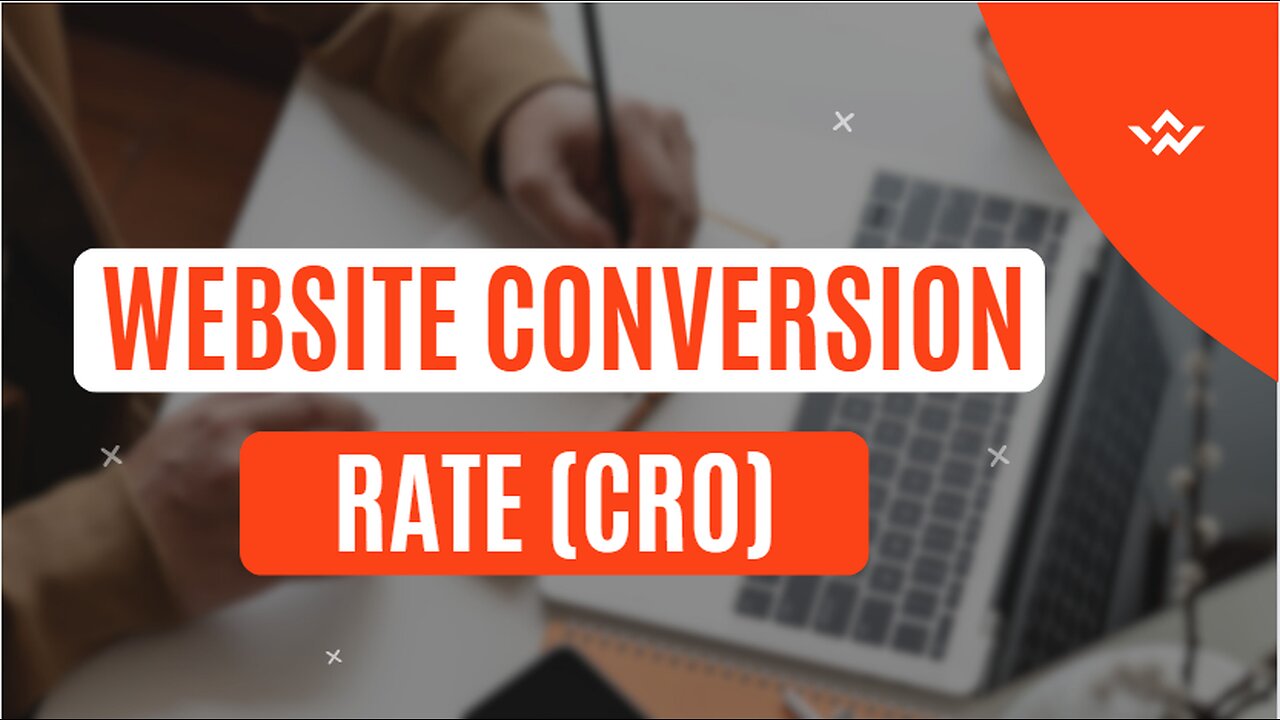Premium Only Content

How to Improve Your Website Conversion Rate with CRO
Improving your website's conversion rate through Conversion Rate Optimization (CRO) is essential for driving business growth and maximizing the value of your online presence. CRO involves a systematic approach to understanding user behavior, identifying bottlenecks, and implementing strategies to boost conversion rates. Here's a comprehensive guide on how to achieve this:
Understand Your Audience:
Conduct thorough audience research to understand your target demographic.
Create detailed customer personas to guide your CRO efforts.
Analyze user behavior through tools like Google Analytics to identify pain points and drop-off stages in the conversion funnel.
Set Clear Goals:
Define specific conversion goals, such as product purchases, newsletter sign-ups, or contact form submissions.
Establish key performance indicators (KPIs) to measure the success of your CRO efforts.
Optimize User Experience (UX):
Ensure your website is mobile-responsive, fast-loading, and easy to navigate.
Simplify the user journey with clear calls-to-action (CTAs) and intuitive navigation menus.
Implement a clean and visually appealing design that enhances trust and credibility.
Create High-Quality Content:
Craft compelling and informative content that addresses your audience's pain points.
Use persuasive copywriting techniques to encourage action.
Incorporate multimedia elements like images, videos, and infographics to engage users.
A/B Testing:
Conduct A/B tests to compare different variations of your web pages, including headlines, CTAs, layouts, and colors.
Use A/B testing tools to measure the performance of each variation and select the most effective elements.
Optimize Landing Pages:
Create dedicated landing pages for marketing campaigns and product/service offerings.
Ensure consistency between ad copy and landing page content.
Implement trust signals, such as customer testimonials, reviews, and security badges.
Streamline Forms:
Simplify and minimize the number of form fields to reduce friction.
Use progressive profiling to collect additional information over time.
Implement real-time validation and error messages to guide users through the form submission process.
Improve Page Load Speed:
Optimize images and use compression techniques.
Minimize the use of large scripts and plugins.
Leverage Content Delivery Networks (CDNs) for faster content delivery.
Personalization:
Implement dynamic content based on user behavior and preferences.
Use personalized product recommendations and content suggestions.
Trust and Security:
Display trust symbols, SSL certificates, and privacy policies.
Assure users that their data is safe and secure.
Provide transparent pricing and refund policies.
Social Proof and Urgency:
Showcase customer reviews, ratings, and case studies.
Use scarcity tactics, like limited-time offers and countdown timers, to create a sense of urgency.
Continuous Monitoring and Optimization:
Regularly monitor website analytics and user behavior.
Keep refining and testing different elements to maintain and improve conversion rates.
Stay updated with industry trends and best practices.
Feedback and User Surveys:
Collect feedback from users through surveys, on-site polls, and contact forms.
Use this feedback to identify issues and areas for improvement.
Multichannel Marketing Integration:
Ensure consistency in messaging and design across various marketing channels (website, social media, email, ads).
Remember that CRO is an ongoing process. By continually analyzing and optimizing your website, you can gradually increase your conversion rates and achieve better results in terms of user engagement and business growth.
-
 58:10
58:10
Kimberly Guilfoyle
4 hours agoAmerica is Back & The Future is Bright: A Year in Review | Ep. 183
25.7K16 -
 3:03:27
3:03:27
vivafrei
9 hours agoEp. 242: Barnes is BACK AGAIN! Trump, Fani, J6, RFK, Chip Roy, USS Liberty AND MORE! Viva & Barnes
71.9K21 -
 LIVE
LIVE
Dr Disrespect
7 hours ago🔴LIVE - DR DISRESPECT - MARVEL RIVALS - GOLD VANGUARD
3,478 watching -
 1:15:00
1:15:00
Awaken With JP
6 hours agoMerry Christmas NOT Happy Holidays! Special - LIES Ep 71
75.8K87 -
 1:42:21
1:42:21
The Quartering
7 hours agoTrump To INVADE Mexico, Take Back Panama Canal Too! NYC Human Torch & Matt Gaetz Report Drops!
78.9K45 -
 2:23:15
2:23:15
Nerdrotic
7 hours ago $9.32 earnedA Very Merry Christmas | FNT Square Up - Nerdrotic Nooner 453
57.3K4 -
 1:14:05
1:14:05
Tucker Carlson
7 hours ago“I’ll Win With or Without You,” Teamsters Union President Reveals Kamala Harris’s Famous Last Words
122K271 -
 1:58:31
1:58:31
The Dilley Show
7 hours ago $29.46 earnedTrump Conquering Western Hemisphere? w/Author Brenden Dilley 12/23/2024
119K27 -
 1:09:59
1:09:59
Geeks + Gamers
8 hours agoSonic 3 DESTROYS Mufasa And Disney, Naughty Dog Actress SLAMS Gamers Over Intergalactic
70.5K19 -
 51:59
51:59
The Dan Bongino Show
9 hours agoDemocrat Donor Admits The Scary Truth (Ep. 2393) - 12/23/2024
777K2.41K